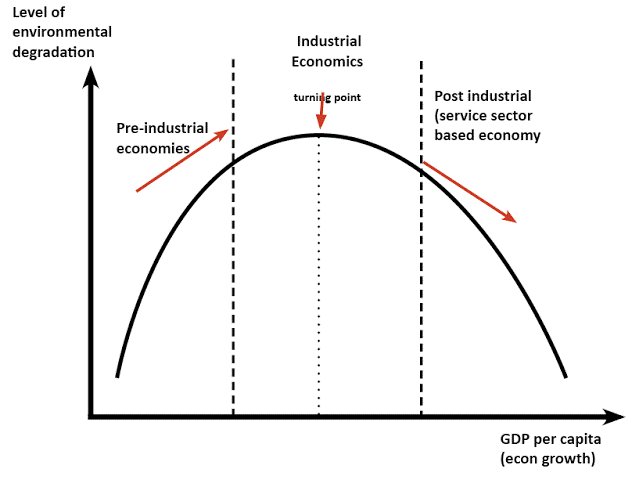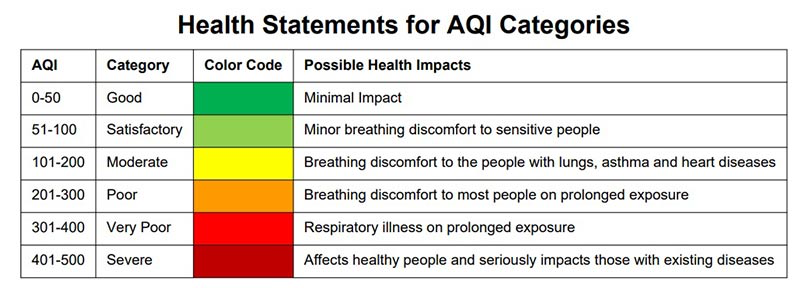Description
Daily Editorial Analysis
Editorial Analysis based on “Roti, kapda, makaan: Why not good air?” which was published in The Indian Express.
Introduction:
- Political parties are talking about environmental issues in the 2024 Lok Sabha manifestos, but it's uncertain if they're their top priorities or guarantees. But whether the air quality will improve without public or political support is a big question.
Perception of Air Quality:
- Most people perceive poor air quality as a common environmental issue.
- Some intellectuals view it as a byproduct of a nation's growth, prioritizing economic progress over environmental concerns.
- However, this viewpoint underscores the urgency of addressing air pollution.
Kuznets Curve Theory:
- The Kuznets Curve illustrates a relationship between economic development and environmental degradation.
- It suggests that environmental degradation initially worsens but improves after reaching a certain level of economic development.
- Questions arise about identifying this threshold and the timing of environmental improvement.

Economic impact of air pollution:
- Healthcare Costs:
- Air pollution increases healthcare expenditures due to treating respiratory diseases, cardiovascular issues, and other related illnesses.
- The burden on public health systems increases with a rise in pollution-related ailments.
- According to a study by the Lancet Commission on Pollution and Health, air pollution-related healthcare costs in India amounted to over $36 billion in 2019.
- Productivity Loss:
- Poor air quality affects worker productivity, leading to absenteeism and decreased efficiency.
- Industries may face production delays or shutdowns due to health issues among workers.
- A World Bank report estimated that air pollution-related productivity losses in India could exceed $150 billion annually.
- Tourism and Business Impact:
- Cities with severe pollution levels may experience a decline in tourism, affecting revenue from the tourism industry.
- Poor air quality can deter foreign investment and business operations, impacting economic growth.
- A study by the World Travel & Tourism Council found that air pollution can reduce tourist arrivals by up to 8% in highly polluted cities.
- Example: Cities like Agra, home to the Taj Mahal, face challenges attracting tourists due to concerns about air pollution's impact on heritage sites and visitor health.
- Agricultural Impact:
- Air pollution can harm crops and vegetation, reducing agricultural yields and impacting farmers' income.
- Crop failures or reduced quality can lead to food supply challenges and price fluctuations.
- The Indian Council of Agricultural Research reported that air pollution can lead to a 15-20% decrease in crop yields, impacting farmers' incomes.
- Long-term Economic Growth:
- Persistent air pollution can hinder sustainable economic development by impacting human capital, innovation, and quality of life.
- According to a 2019 study, the yearly deaths attributable to air pollution translate to an economic loss of Rs 2.7 lakh crore, that is, around 1.36 per cent of the country’s GDP.
- Another recent survey has revealed that the Indian GDP would have been 4.5 per cent higher if air pollution had grown 50 per cent slower each year. This means slower growth of air pollution will lead to faster economic growth.
Way ahead:
- Political Agenda : Air pollution must become a political priority to initiate effective change.
- Media coverage: Increased media coverage and public discourse can drive political action.
- Emphasis should be placed on both research and on-ground activities or implementation for pollution reduction.
- Decentralization of policies and strategies to local bodies is essential for effective implementation.
- Micro-Level Approaches:
- Local bodies should identify pollution sources and opportunities for air quality improvement at the micro-level.
- Green zones, open areas, and water bodies should be identified and restored to mitigate pollution.
- Community Involvement and Outreach:
- Public awareness campaigns are crucial to make people recognize clean air as a fundamental right.
- Regular outreach programs at the municipal level, involving experts and academicians, can raise awareness and guide action.
- Mass movements are needed to demand clean air, akin to protests for other civic issues.
Initiatives taken by India
- National Clean Air Programme (NCAP):
- Launched in 2019, aims to reduce particulate matter (PM) levels by 20-30% in 122 cities by 2024.
- Focuses on city-specific action plans, technology adoption, capacity building, and public awareness.
- Bharat Stage VI (BS-VI) Emission Norms:
- Transitioned to BS-VI emission standards for vehicles nationwide from April 2020 to reduce vehicular emissions.
- BS-VI compliant vehicles have lower levels of harmful pollutants like nitrogen oxides (NOx) and particulate matter (PM).
- Electric Vehicles (EVs) Promotion:
- Faster Adoption and Manufacturing of Hybrid and Electric Vehicles (FAME) scheme: Provides incentives for purchasing electric vehicles, charging infrastructure development, and research in electric mobility.
- Zero Emission Vehicles (ZEVs): Encouraging the adoption of ZEVs by offering subsidies, tax incentives, and promoting electric vehicle manufacturing in India.
- Renewable Energy Promotion:
- National Solar Mission: Aims to achieve 100 GW of solar power capacity by 2022 through subsidies, incentives, and policy support.
- Wind Energy Development Program: Promotes the growth of wind power generation through tariff mechanisms, financial incentives, and capacity building.
- Pollution Control Measures for Industries:
- Industrial Pollution Control Schemes: Implementation of effluent treatment plants (ETPs), emission control systems, and pollution monitoring mechanisms in industries.
- Green Rating for Integrated Habitat Assessment (GRIHA): Encourages industries to adopt green practices and technologies for sustainable development.
- Green Cover Expansion:
- National Afforestation Programme (NAP): Aims to increase forest cover and promote afforestation through tree planting initiatives, watershed management, and biodiversity conservation.
- Urban Greening Schemes: Development of urban green spaces, parks, and gardens to enhance biodiversity, improve air quality, and provide recreational areas.
- Waste Management and Biomass Burning Control:
- Swachh Bharat Mission: Focuses on solid waste management, including segregation, recycling, and proper disposal of waste to reduce open burning and pollution.
- National Biomass Cookstoves Initiative: Promotes cleaner cooking technologies like improved biomass cookstoves, biogas plants, and LPG connections to reduce indoor air pollution from traditional cooking fuels.
|
What is Air Quality Index (AQI)?
The AQI is an assessment of the air quality taking into account eight pollutants — PM 2.5 (particulate matter less than 2.5 microns), PM 10 (particulate matter less than 10 microns), nitrogen oxides (NOx), sulphur dioxide (SO2), ozone (O3), carbon monoxide (CO), ammonia (NH3) and lead (Pb).
AQI categories
There are six AQI categories:
i) Good (0–50)
ii) Satisfactory (50-100)
iii) Moderate (101-200)
iv) Poor (201-300)
v) Very Poor (301-400)
vi) Severe (401-500).

|





